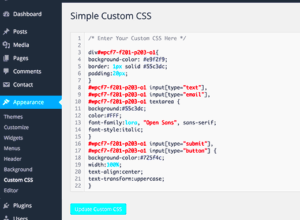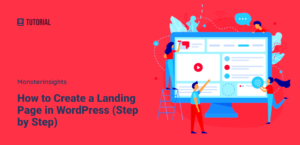Changing your Divi WordPress theme can be a great way to refresh the look of your website, improve user experience, and keep up with design trends. Over time, your website might start feeling outdated, and switching to a more dynamic and modern theme can make all the difference. Whether you’re looking for a more professional design or a fresh look to appeal to your audience, Divi provides a wide variety of theme options. This change doesn’t just affect appearance; it can also enhance website performance and functionality.
Why You Should Consider Changing Your Divi Theme

There are several reasons you might want to consider changing your Divi theme. Below are a few key factors to keep in mind:
- Modern Design: As design trends evolve, your website might start looking out of place. A new theme can bring a fresh, trendy design that keeps your site current and appealing.
- Improved User Experience: A new theme can offer better navigation, faster loading speeds, and more responsive design, which can directly impact how users interact with your site.
- Mobile Compatibility: A mobile-friendly design is essential. If your current theme doesn’t display well on mobile devices, it’s time for a change to ensure all users have a smooth browsing experience.
- Better Functionality: New themes often come with added functionality, like improved widgets, easier customization options, and better support for plugins.
- SEO Benefits: A theme that is optimized for SEO can boost your site’s visibility on search engines, bringing in more organic traffic.
Steps to Change Divi WordPress Themes

Changing your Divi theme is a simple process, but it requires careful planning to ensure everything goes smoothly. Here’s a step-by-step guide to help you through the process:
- Back Up Your Website: Before making any changes, always back up your website. This ensures you have a restore point in case something goes wrong during the theme change.
- Choose a New Theme: Explore the available themes on Divi or third-party sources. Look for a theme that fits your brand, design preferences, and functionality needs.
- Install the New Theme: Navigate to your WordPress dashboard, go to “Appearance” > “Themes,” and click “Add New.” Upload and activate your new theme.
- Customize the Theme: Divi allows for extensive customization. Use the theme customizer to adjust colors, fonts, layouts, and more to match your brand identity.
- Test the New Design: After the theme is installed and customized, make sure everything works as expected. Check different pages and devices to ensure responsiveness and proper functionality.
- Adjust Content and Widgets: Some widgets and content may need to be adjusted to fit the new theme layout. Review and make necessary changes for a seamless transition.
- Optimize SEO Settings: Ensure the theme is SEO-friendly by checking meta tags, schema markup, and other SEO settings. Update them if necessary to maintain or improve your search rankings.
- Publish the Theme: Once you are happy with the look and feel of your new theme, go ahead and publish the changes for your audience to see.
How to Choose a Theme that Fits Your Brand
Choosing the right theme for your WordPress site is a crucial step in defining your brand’s online presence. Your website’s theme sets the tone, and it needs to align with your brand identity, values, and target audience. Here are some tips to help you select a theme that fits your brand perfectly:
- Understand Your Brand Identity: Before picking a theme, take a moment to reflect on your brand. What message do you want to convey? If your brand is professional, go for a clean, minimalist design. If your brand is fun and creative, look for something bold and vibrant.
- Check for Customization Options: A theme should offer flexibility in customization. Look for themes that allow you to change colors, fonts, layouts, and widgets to reflect your brand’s style.
- Prioritize User Experience: Choose a theme that offers an intuitive user experience. Your visitors should be able to easily navigate your website, find information, and interact with your content.
- Responsive Design: Your theme must be mobile-friendly. With more users accessing websites via mobile, a responsive theme ensures your site looks great on all devices, enhancing user satisfaction.
- SEO Optimization: Make sure the theme is built with SEO in mind. A well-optimized theme can help you rank higher on search engines and increase organic traffic to your website.
- Speed and Performance: A good theme should load quickly. Slow-loading sites can turn visitors away. Test your theme’s performance before making a final decision.
Benefits of a More Dynamic Look for Your Website
Having a dynamic and visually appealing website can offer many benefits for your business. A more dynamic look doesn’t just catch the eye; it enhances user experience, encourages interaction, and helps you stand out in a crowded digital space. Let’s explore some of the key advantages:
- Improved User Engagement: A fresh, dynamic design can capture your audience’s attention. Interactive features, animations, and modern aesthetics keep users engaged longer and encourage them to explore more of your site.
- Increased Conversions: When your website looks professional and easy to navigate, visitors are more likely to convert into customers. A dynamic design can guide users toward key actions, such as signing up for newsletters or making a purchase.
- Better Visual Storytelling: A dynamic design allows you to better tell your brand story through images, videos, and other media. This helps to create a stronger connection with your audience.
- Enhanced Brand Identity: A unique, eye-catching website helps to reinforce your brand identity. The right design can convey your values, mission, and personality in a way that resonates with your audience.
- Higher SEO Rankings: Dynamic sites that are built with modern best practices (such as fast loading times and mobile optimization) often perform better in search engine rankings, leading to more organic traffic.
- Competitive Advantage: A website that stands out with a dynamic, modern design can give you a competitive edge. It shows that you are invested in your online presence and committed to providing the best user experience.
Common Mistakes to Avoid When Changing Themes
Changing your WordPress theme can be a smooth process, but there are several mistakes that can derail your efforts. To ensure a seamless transition, it’s essential to avoid these common pitfalls:
- Not Backing Up Your Website: Before making any changes, always back up your website. This way, if something goes wrong, you can restore your site to its previous version without losing content.
- Ignoring Mobile Compatibility: Many themes look great on desktop but fail to perform well on mobile. Ensure your new theme is fully responsive, offering a seamless experience across all devices.
- Forgetting to Check Theme Updates: Some themes require regular updates to ensure compatibility with the latest WordPress versions. Failing to do so can lead to security vulnerabilities or broken features.
- Overloading Your Site with Plugins: While plugins can enhance your site’s functionality, too many plugins can slow down performance. Stick to essential plugins that enhance your theme’s core features.
- Neglecting SEO Optimization: A theme change can affect your SEO settings, so don’t overlook important SEO elements like meta descriptions, alt tags, and keyword optimization when switching themes.
- Not Customizing the New Theme: Simply installing a new theme and leaving it as-is can create a generic-looking website. Customize it to reflect your brand’s identity and make it unique.
- Ignoring User Feedback: If possible, gather feedback from your audience before making significant changes. Users’ preferences can provide valuable insights into what works and what doesn’t.
Frequently Asked Questions
When it comes to changing Divi WordPress themes, there are some common questions that many users have. Here are answers to a few frequently asked questions to help guide you through the process:
- Will changing my Divi theme affect my existing content?
In most cases, changing your theme won’t delete or change your content. However, some theme settings and customizations, like widgets or page layouts, may need to be adjusted after the switch. Always back up your site before making any changes to avoid losing important data.
- Do I need to reinstall plugins when changing themes?
Generally, your plugins will continue to work with the new theme, but it’s a good idea to check compatibility. Some plugins may be designed to work specifically with certain themes, and you may need to update or adjust your plugin settings after the change.
- How do I make sure my new theme is SEO-friendly?
Before finalizing the theme change, check for SEO-friendly features such as clean code, fast loading times, mobile responsiveness, and built-in SEO tools. Also, make sure your content and meta tags are set correctly in the new theme to maintain your SEO performance.
- Will my website’s speed improve with a new theme?
If the new theme is optimized for performance, it can indeed help improve your website’s loading speed. A well-coded, lightweight theme will generally be faster than a heavy, outdated theme. Always test your site’s speed before and after changing themes to ensure better performance.
- What should I do if my site looks broken after switching themes?
If your site appears broken after switching themes, it might be due to missing or misconfigured elements such as widgets, menus, or custom post types. Try adjusting the settings, checking compatibility with plugins, or restoring from a backup if necessary.
Conclusion and Final Thoughts
Changing your Divi WordPress theme can significantly enhance your website’s design, user experience, and performance. By carefully selecting a theme that aligns with your brand, avoiding common mistakes, and considering the benefits of a dynamic look, you can create a fresh and modern website that better serves your audience. With proper planning and a bit of customization, your new theme can give your site a competitive edge and improve its overall functionality. Just remember to back up your site before making any changes, and ensure your theme is compatible with your existing content and plugins.



